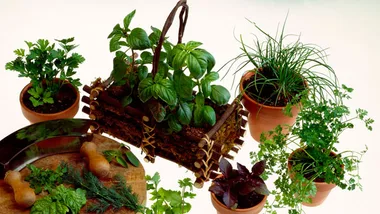This is the season for jam makers. Even better, it’s the season when gardeners with laden trees give baskets full of fruit to jam enthusiasts — and the jam makers say “thank you” by giving the gardeners a jar or two of their best conserves.
Homemade jam is rich in fruit and fragrant because it’s freshly made. It’s also a slight adventure opening every jar, as each batch is rarely as uniform and perfect as commercial varieties. But that’s half the fun — a bit runny one week, slightly toffee-like the next, but always good. (Unless it’s burnt, in which case don’t persevere. Better a runny jam than a singed one — and you can always pretend a really runny jam was meant to be fruit sauce, eaten on ice-cream or dribbled into sweeten natural yoghurt.)
The best jam trees depend on what jams you like best. My favourites would have to be apricot, because I’ve never had a really good commercial apricot jam. (I also love eating large numbers of sun-warmed apricots.) Apricots will give a suitably large crop, enough for eating fresh, stewed fruit, bottling and freezing whole fruit to make jam later in autumn or winter when you’ve got more time. My apricots fruit over Christmas, and there is no way I’m making jam then!
In pictures: Your favourite Women’s Weekly recipes
My second favourite “jam tree” is mulberry, because it’s hard to find mulberry jam, too. We rarely get enough fruit in one day to make jam, so I freeze them until I have enough for a good batch. And then there is loquat, which is a perfect jam fruit. I don’t think you can buy loquat jam either. It’s a bit like a cross between apricot jam and plum jam — and there is always masses of fruit on the tree to make dozens of pots of jam — and to give to others who’ll make jam too.
Which brings me to the classic jam tree: the plum. Plums are hardy, relatively pest-free trees that flourish in a wide range of climates and soils while giving an abundance of fruit. They are also perhaps the easiest fruit to make into jam, as they are rich in pectin (which is the setting agent in jam), especially if you pick them slightly green — or at least add some under-ripe fruit to your fragrant, juicy ripe fruit.
Anyone with a plum tree and recipe for jam is guaranteed a line of jars that range from golden jam through blood red to almost black, depending on the variety of plum. I love “blood plum” jam simply for the colour but lighter and purple-skinned plums give great tasting jams too.
For years before he met me, my husband grew a giant fig tree solely to give the fruit to an avid fig jam maker. He got six jars of fig jam in return, enough to last him for months on his toast. And if you have a fig tree that produces a crop of early season figs (usually a smaller crop of very large but often somewhat drier and less flavoursome figs called “breva” before the main “higo” crop) these make excellent jam.
Two of the most exquisite jams in the world may be cherry and strawberry. Sadly, though both fruits are delicious, especially when home grown, you need to grow a heck of a lot to spare any for jam. A friend made jam out of one picking of strawberries this year, which had ripened during the wettest couple of days, and so were a bit watery and marked — but they nevertheless made beautiful jam.
I also make lilly pilly jelly. It’s wonderful and has quite a different flavour from other jams, but you need to pick the fruit before it fully colours or it’ll have turpentine aftertaste.
Jam making is also great for fruits you wouldn’t eat, such as crab apples, Himalayan pears and ornamental quinces.
And then there are the marmalades. We grow Seville oranges, the bitter but full-flavoured kind that makes one of the best marmalades of all. Cumquat marmalade is also excellent, as is calamondin marmalade. Calamondins are often sold as cumquats, but they are smaller and bitterer — and more drought- and heat-proof, too.
Grapefruit, Tahitian limes and lemons are other marmalade favourites, and all surprisingly simple to make if you follow the recipe exactly, as citrus, too, has a high pectin level.
Related: The backyard gardening revolution that’s taking over Sydney
Actually I could keep writing a large book about fruits for jam — choko and ginger jam, marrow and ginger marmalade, zucchini and lemon jam, pineapple jam, guava jam, apple and passionfruit jelly, mango jam, even the almost-peach flavoured tomato jam, plus lemon curd — and apologies to all jam makers if I have left out your favourite.
If you have never made jam, or have to buy the fruit for your jam, it’s time to think about planting your own “jam tree”. And if you don’t think you’ll ever become a jam maker, grow a “jam tree” anyway. It’ll take at least three to four years to bear — plenty of time to find an eager jam maker who’ll give you pots of rich fruity jelly in return for your baskets of produce.
Your say: Do you make jam or give fruit to someone who does? What is your favourite flavour jam?
Newsletter conversion description. Get the latest in your inbox.














.png?resize=380%2C285)
.jpg?resize=380%2C285)




.png?resize=380%2C285)




















.jpg?resize=380%2C285)




























